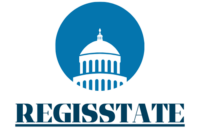In today’s interconnected world, understanding the nuances of public affairs is more crucial than ever. Public affairs, often seen as the bridge between organizations and their stakeholders, encompasses a range of activities aimed at influencing public policy, building relationships, and managing reputations. As businesses and governments navigate an increasingly complex landscape, the role of public affairs professionals becomes indispensable.
Public affairs isn’t just about media relations or lobbying; it’s a strategic function that involves crafting messages, engaging with communities, and understanding political climates. Organizations leverage public affairs to align their goals with societal expectations, ensuring their voices are heard in the corridors of power. By grasping the essence of public affairs, one can appreciate its impact on decision-making processes and its ability to shape the future of industries and communities alike.
Public Affairs Meaning
 Public affairs refers to the strategic communication efforts designed to influence public policy and build relationships with stakeholders. Organizations engage in public affairs to manage their external environment and ensure that their actions align with societal expectations and legislative frameworks. Public affairs professionals utilize a combination of advocacy, media relations, and community outreach to achieve their goals.
Public affairs refers to the strategic communication efforts designed to influence public policy and build relationships with stakeholders. Organizations engage in public affairs to manage their external environment and ensure that their actions align with societal expectations and legislative frameworks. Public affairs professionals utilize a combination of advocacy, media relations, and community outreach to achieve their goals.
The primary components of public affairs include policy analysis, stakeholder mapping, and legislative tracking. Policy analysis involves examining the implications of proposed regulations and policies on an organization’s operations. Stakeholder mapping identifies key individuals and groups that can impact or be impacted by organizational activities. Legislative tracking ensures that organizations stay informed about new laws that could affect their interests.
Public affairs strategies are essential for navigating political climates. By understanding the shifting landscapes, organizations can better prepare and respond to changes that may influence their objectives. Effective public affairs work fosters meaningful community engagement, strengthens relationships with elected officials, and supports the advocacy of beneficial policies.
Historical Context of Public Affairs
Public affairs has evolved to meet the changing needs of organizations within societal structures. It plays a critical role in facilitating communication and aligning organizational strategies with public policy.
Evolution of Public Affairs
 Public affairs has transformed significantly since its early roots in government and politics. Initially focused on governmental processes and legislative advocacy, it has expanded to include strategic communication and stakeholder engagement as core functions. During the 20th century, increased media access and public awareness shifted the emphasis from mere policy advocacy to a comprehensive approach that also considers societal expectations. This shift underscores the importance of transparency and accountability in modern public affairs.
Public affairs has transformed significantly since its early roots in government and politics. Initially focused on governmental processes and legislative advocacy, it has expanded to include strategic communication and stakeholder engagement as core functions. During the 20th century, increased media access and public awareness shifted the emphasis from mere policy advocacy to a comprehensive approach that also considers societal expectations. This shift underscores the importance of transparency and accountability in modern public affairs.
Key Milestones in Public Affairs
Several key milestones have shaped the modern landscape of public affairs. In the early 1900s, the rise of lobbying as a formal practice highlighted the necessity for organizations to engage directly with policymakers. The establishment of public relations as a recognized profession in the 1920s further emphasized the need for strategic communication. The advent of digital technology and social media in the late 20th century marked another pivotal moment, enabling instant communication and broader stakeholder engagement. These developments have collectively enhanced the ability of public affairs professionals to influence policy and public perception.
Key Components of Public Affairs
Public affairs integrates various elements that together work to influence public opinion and policy. It requires a strategic approach to ensure effective communication and engagement with stakeholders.
Public Policy
 Public policy forms the cornerstone of public affairs. Professionals analyze government actions and proposals to assess their impact on organizational objectives. This involves evaluating regulatory changes and proposing modifications to align with industry needs. They build relationships with policymakers to advocate for favorable outcomes.
Public policy forms the cornerstone of public affairs. Professionals analyze government actions and proposals to assess their impact on organizational objectives. This involves evaluating regulatory changes and proposing modifications to align with industry needs. They build relationships with policymakers to advocate for favorable outcomes.
Media Relations
Media relations within public affairs focus on managing an organization’s image and message in the media. By crafting press releases and organizing press conferences, professionals ensure accurate media portrayal. They engage with journalists to disseminate key messages, handle inquiries, and mitigate negative coverage.
Bridging Organizations and Society
Public affairs stands as a vital component in bridging the gap between organizations and their stakeholders. By integrating strategic communication, policy analysis, and stakeholder engagement, it empowers organizations to align with societal expectations and influence public policy effectively. The evolution of public affairs highlights its adaptability to modern challenges and its significance in shaping both business strategies and public perceptions. As organizations navigate complex political landscapes, they rely on public affairs to advocate for favorable outcomes while maintaining ethical standards and transparency. This multifaceted approach ensures that organizations can build trust, enhance their reputation, and contribute positively to society.



